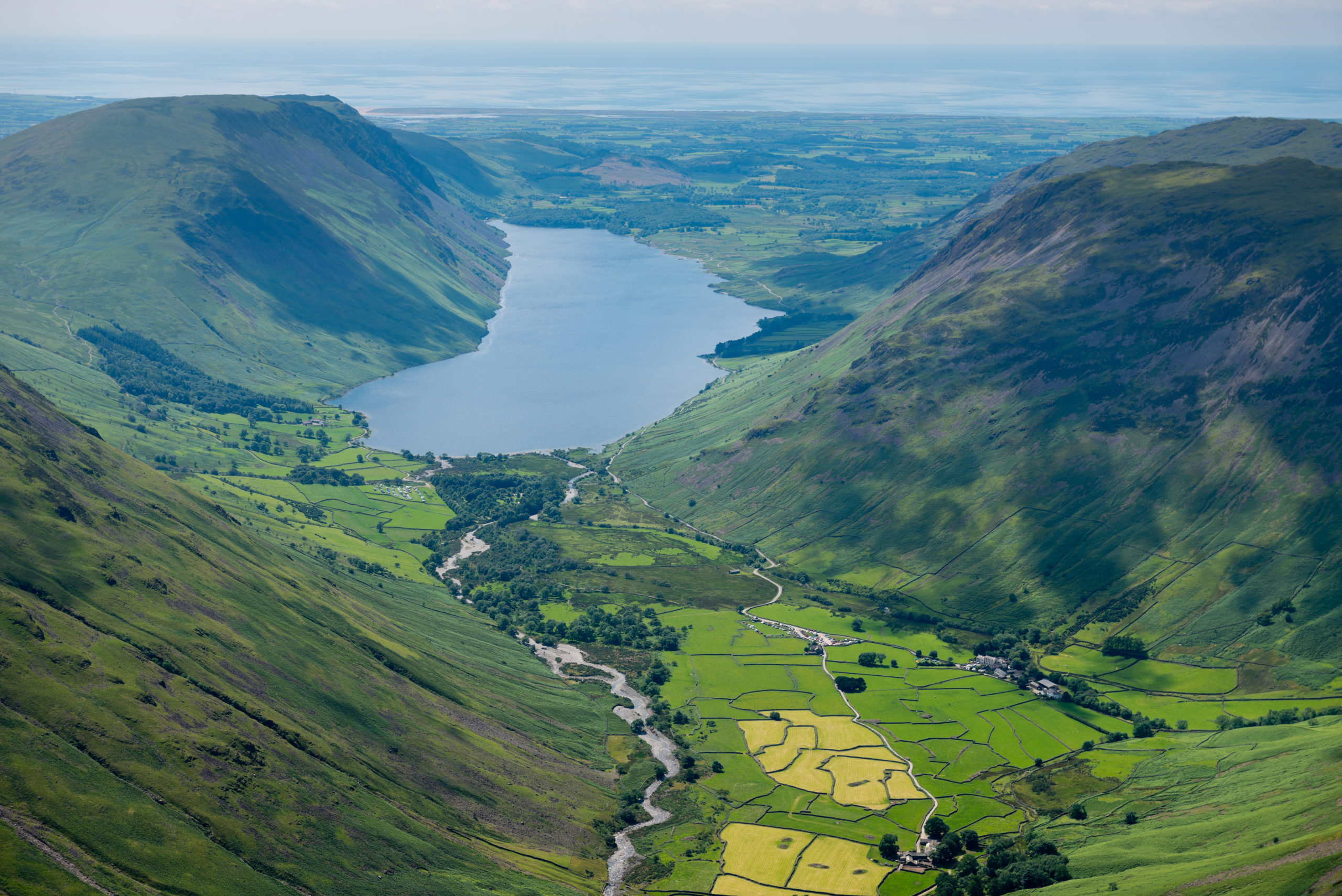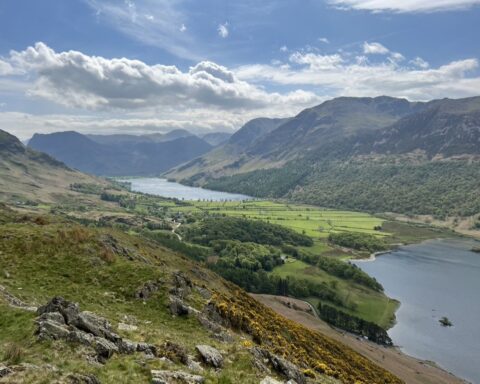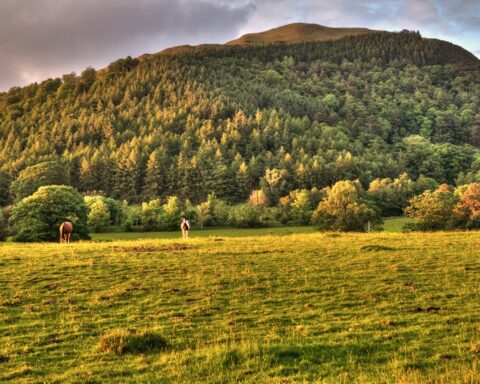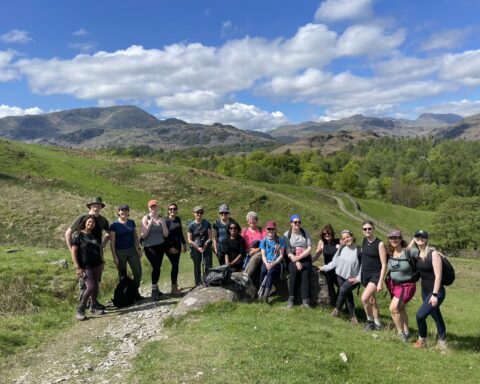Englands Highest Mountains
Enter Wasdale and you enter a world of giants; stand at the head of the valley and look up, and you’ll get a sense of what the people of Lilliput felt when Gulliver came visiting. Towering directly above you are England’s highest and most dramatic mountains – Scafell, Scafell Pike and Great Gable among the best-known. On a global scale, they’re not tremendously high, but Wasdale Head is just a few miles from the coast, so you’re looking up at these peaks almost from sea level. Those who come here come either to gaze in wonder, or to scale the summits.
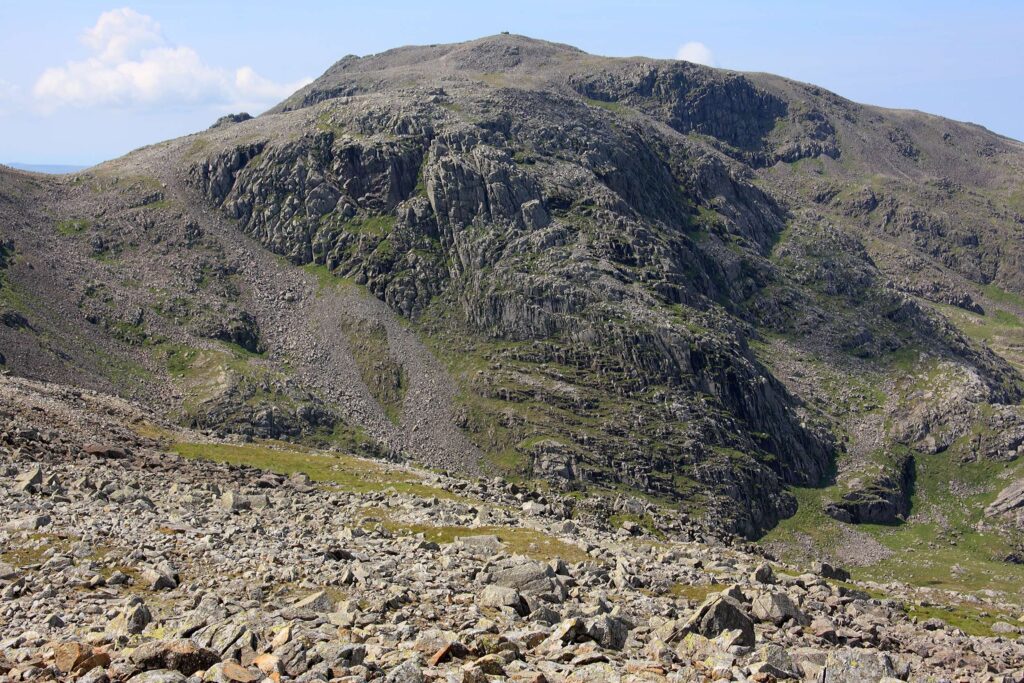
Villages in Wasdale
The main gateway to the valley is Gosforth, a thriving village with pubs, cafés and shops – and a long, fascinating history. The parish church, St Mary’s, contains several artefacts associated with the region’s early Scandinavian settlers. The most notable is the Norse cross in the churchyard, the tallest in England. It’s occupied the same spot for almost 1,100 years and yet its fine, intricate carvings are still clearly visible. Other villages nearby include Santon Bridge, which hosts the World’s Biggest Liar competition every November, and Nether Wasdale, with its pretty village green complete with traditional maypole. Like Gosforth, they both offer accommodation and dining options for travellers.
Spectacularly Scenic Driving
There is no public transport in Wasdale but, from Gosforth, a winding road skirts the base of craggy fells. It’s a great drive, in superb surroundings, although nothing can prepare you for the scene that awaits you on reaching Wastwater. Here, the mountains come tumbling right down to the water’s edge in spectacular fashion, leaving only a narrow ledge down one side of England’s deepest lake – just enough room for the narrow road to continue its journey to the head of the valley.
The River Irt
The River Irt begins at Wasdale Head near Scafell Pike, flowing through the Drigg Dunes and Irt Estuary Nature Reserve before meeting the Rivers Esk and Mite at Ravenglass. Famous in the 19th century for rare black pearls in its freshwater mussels, it suffered near-extinction due to poaching. Conservation efforts by the West Cumbria Rivers Trust from 2015 to 2018 aimed to protect these mussels. The river’s proximity to Wastwater in Wasdale highlights its significance in the Lake District’s stunning natural landscape.
Wasdale Head
Wasdale Head is the final settlement, located on the last patch of relatively flat, low-lying ground squeezed in between lake and mountains. Here, at the end of the road, you’ll find a patchwork of tiny fields divided by tremendously thick dry-stone walls; St Olaf’s Church, one of the smallest churches in England; and the Wasdale Head Inn. The latter is closely linked with the history of rock climbing – a place where the Victorian pioneers of the sport would stay before making first ascents of some of Lakeland’s most famous crags and pinnacles.
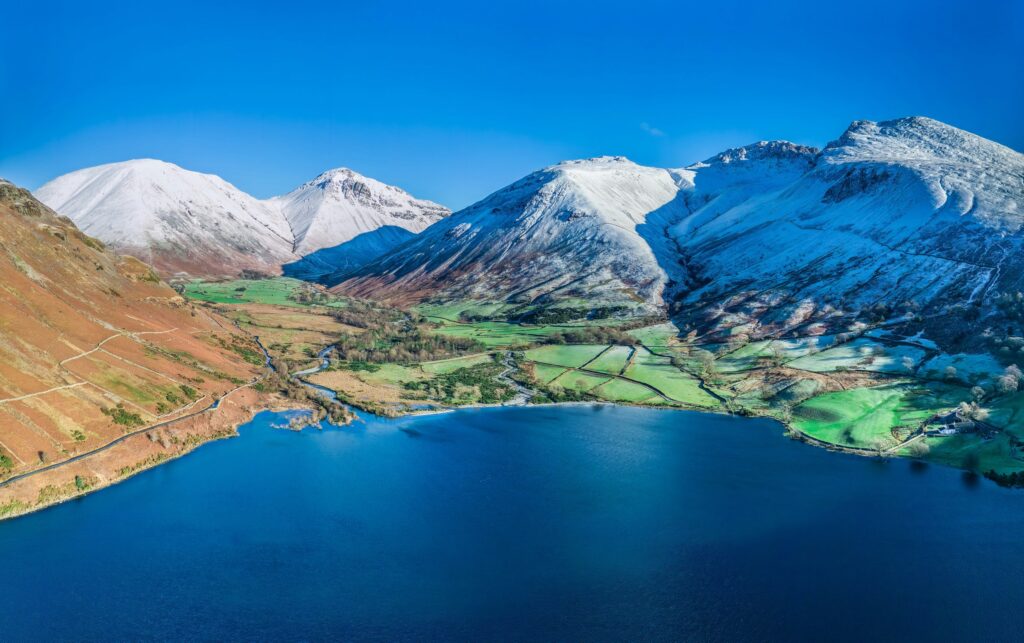
Popular Destination for Rock Climbing
These rock faces continue to be a big draw today, and the valley remains a popular destination for climbers and scramblers alike. But it is walkers who throng the valley-head from late spring until late autumn – most of them with their sights set firmly on Scafell Pike, England’s highest mountain at 3209ft (978m) above sea level. Other peaks can be climbed from Wasdale Head, including Great Gable, Kirk Fell, Yewbarrow, Lingmell and Scafell. The latter, at 3162ft (964m), is England’s second highest top, although it was long thought to be the highest – until more accurate methods of measurement proved otherwise. It provides a quieter alternative to its famous neighbour. As with any fell-walking in this area though, you need to seek advice about routes and consult a mountain weather forecast before setting out.

